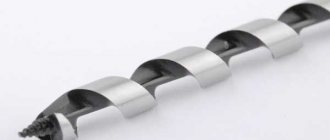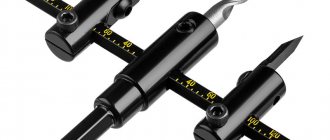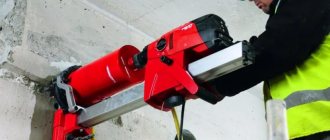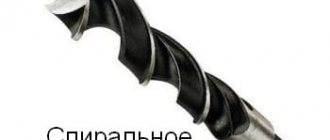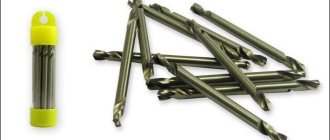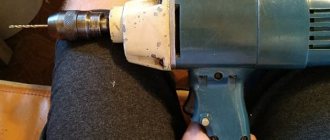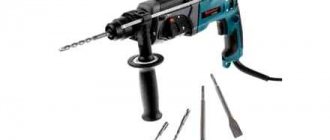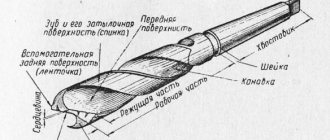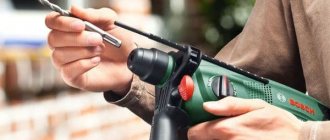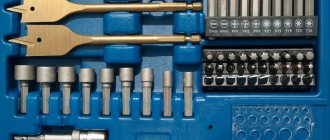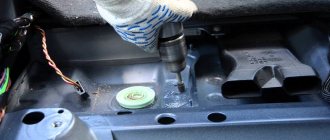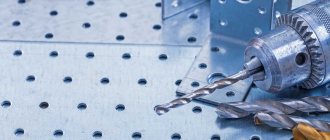Who is Forstner?
Benjamin Forstner was born on March 25, 1834 in the American state of Pennsylvania. At 16, he left home and became friends with the utopian socialist William Keil. Together they moved to the then-undeveloped northwest of the United States and founded a community.
In 1866, Benjamin married Louise Snyder and, in order to provide for his family, decided to take up a new business, starting a career as a gunsmith and inventor. In 1874, Forstner patented his unique invention - a drill of a rather bizarre shape. He presented it at two World's Fairs: Philadelphia in 1876 and Chicago in 1893. Even after the first exhibition, the unusual drill with a cutter became so popular that Benjamin Forstner amassed an impressive fortune, and in 1891 he retired, continuing to receive royalties from all sales of his invention. And its development is still used today.
What is a Forstner drill, general information
But what is so unique about the Forstner drill, since it literally began to be “snatched up like hot cakes”?
Benjamin Forstner came up with a drill for a very specific purpose: he needed to make not a through hole in the tree, but a recess with a bottom, and the walls of the hole had to be even. It was impossible to do this with an ordinary drill, so with the light hand of Forstner a drill was born, around the central tip of which a zigzag cutter-blade is located. Moreover, this blade is not solid, due to which the cut wood is forced out as it is drilled. Some call it a milling drill, because, in fact, this tool has a cutting edge at the end.
Drill Features
Initially, the inventor had one goal - to make a kind of hole in a piece of wood. The hole implies that this recess will have a bottom, i.e. the wood had to be drilled not through.
Moreover, it was necessary to try to make the walls and bottom of the resulting hole smooth, and not with various protruding broken chips and pits. And all this can be done by a tool such as a Forstner drill .
The center of the device is not much different from a classic drill. This is the edge. The blade is located perpendicular to this peak. But this is not just a plate, but a zigzag cutter. Those. if you look from below, you will see a circle interrupted at two points, through which the diameter (cutter) passes, and in the middle there is a tip.
The sequence of the tool entering the tree is as follows: first, the tip cuts into the surface, marking the course; then there are circular gutters, they do not allow the nozzle to jump off the intended course; only after that the cutter itself comes into play, making a recess.
By the way, it has another function - to force the cut wood out, thereby clearing the hole of debris. This technology guarantees that the hole will be such that you can’t find fault with it.
Furniture forstner drill bit
If you try to do the same with a screw drill, you will end up with a cone rather than a flat bottom. And other alternative options will make you sweat, because even if you get the desired shape, it will take a very long and tedious time to clean, polish and bring it to perfection.
These devices are most popular among furniture makers. To assemble a construction set from all the parts, for example, a sofa or a cabinet, holes are not made in such production, but closed recesses are used, which is why the product is also called a furniture forstner drill . Such an item is also used for decorative purposes: remember the holes in the candlesticks for small round candles - and here without these special ones. there were no attachments.
Principle of operation
Although today's Forstner wood drill is very different from Benjamin Forstner's invention 145 years ago, its operating principle remains unchanged. As before, the wood is cut using the external cutting surface, and using the cutters inside this rim, the wood is removed and “thrown” out.
All original Forstner drills have a central point, although the working part in them is the cutting edge surrounding this point. To use the drill correctly, you need to make a mark with a marker, touch the marking point with the central tip and press it into the material until the circular cutting plane touches the surface of the product (and it should lie flat on the surface). After this, you need to start drilling at low speeds (800 - 1800 rpm).
It is worth mentioning the general principles of using a Forstner drill:
- The larger the hole you need to make, the slower you need to cut it. Otherwise, the cutting edges will simply overheat and the drill may break.
- To avoid accidentally making the hole deeper than necessary, take a special forstner drill with a limiter for the job. Such a limiter will stop drilling in time.
- If you need to make a hole in a thin sheet of wood, where there is a risk of accidentally making a hole through it, you can use two Forstner drills: one regular and the other with a ground off central point. It's simple - we start drilling with a regular forstner drill, and then use a tool with a sharpened tip, which we use to finish the job.
Scope of application of the tool
Initially, Forstner wood drills were intended to produce blind holes in various types of wood. Today, the device is used in the processing of furniture boards and their modifications. With the help of such a drill in furniture production one obtains:
- Blind holes.
- Large deep holes.
In addition to the furniture industry, the tool has also found application in other industries. It is used for installation:
- Windows
- Door lock.
- Electrical wiring.
- Water supply.
Using a Forstner drill, it becomes possible to obtain excellent recesses that do not reach the surface by 1-2 mm. This tool can be easily installed in any electric drill that has a speed controller.
What types of Forstner drills are there?
As you might guess, there are different types of Forstner drills, in addition to the “regular” one discussed above. Let's look at the most popular of them.
Drill with cutters
This type of Forstner drill can easily be seen to have carbide cutters. This drill is most similar to Forstner’s original invention, and is also very expensive.
This type of drill is less susceptible to overheating during operation, but it has a fairly high chance of jumping off during drilling, as well as increased vibration during operation. If someone is looking for a Forstner drill for masonry, they need to take a closer look at the option with cutters.
Drill with toothed crown
Here, the entire cutting working edge is strewn with small incisor teeth. This type of drill is worth choosing if you need to make a hole of large diameter. These drills heat up less than “conventional” ones, but the likelihood of jumping and excessive vibration are also present.
Drill with stop
This type of drill is used to ensure that the hole is not made deeper than necessary. The limiter attachment will not allow this to happen.
Drill with removable tip
As noted above, this type of drill is used when working with thin material, so as not to accidentally drill through it.
In addition to the classification above, Forstner drills vary in size - a Forstner drill has sizes ranging from 10 millimeters to 6 centimeters.
Design
The working part has two main cutting edges and a short centering point. The profile of the drill resembles a beech Z with rounded top and bottom parts (a mirror image of the letter S). On the jumper there is a selective cutting edge, and along the circumference there is a cutting edge, which, after the formation of the hole, also acts as a limiter, holding the tool in the working diameter.
The chips are thrown upward, which prevents the drill from jamming. Circumferential cuts are made for machine sharpening. The selected edge can be adjusted manually. To do this, use a file with a fine notch or diamond coating.
The material used is mainly high-speed steel. It withstands moderate heating of the working area well. Some tool manufacturers additionally make titanium coating or carbide brazing. Often teeth are cut on the working edges. This reduces overheating and increases drilling speed with a slight loss of cleanliness of the machined surface.
You can use a drill with a standard chuck. For example, a 15–26 mm Forstner drill has an 8 mm shank, and a tool with a large (28–60 mm) working area diameter has a 10 mm shank.
How to choose the right drill and distinguish a fake?
Naturally, not all drills are the same in quality.
Those who want "real" American quality should be prepared to shell out some extra cash.
for a decent amount. The original Forstner drill is produced by the American company. Their products are different from others in that they are made from carbon steel and not stamped through casting like all other companies.
If there is no money for such products, you will have to choose among others. And here there is a great chance of running into a fake. How to distinguish real drills from low-quality ones?
Real drills have 3 “features” that are usually not found in fakes:
- There is a small hole in the center.
- The outer cutting rim has no slots (they are not needed there, since the cutters are sharpened by hand), and is also interrupted only in two places.
- The central point is not as long as in fakes.
So, we have already learned how to choose such a tool, and you can buy a Forstner drill in almost any hardware store.
Material of manufacture and speed of work
Typically, quality Forstner drills are made from high-speed steel (HSS) with various additives that should increase the strength of the tool. This way they will not overheat, like products made from ordinary steel, and will not lose their sharpness. Some Forstner drills have the cutting part coated with titanium nitride so that it heats up even more slowly during operation. However, if you need a milling drill literally several times, then you can save a lot of money and purchase a tool made of ordinary steel.
As for what drill rotation speed to set when working with a Forstner drill, everything is simple - you need to follow the following tips:
- If the drill is large in diameter, set the rotation speed to low.
- Before work, carefully look at the packaging - the maximum permissible rotation speed should be indicated there.
Forstner drill rotation speed when drilling
Device characteristics
Materials for production
drill , patented in the century before last, is made of carbon steel. Other, non-original types of Forstner cutters are made of high-speed (alloy) steel HSS, which has good performance at high cutting speeds and low cost.
When ordinary steel overheats, it becomes softer and the cutters lose their sharpness. High speed steel has high resistance to overheating. To reduce the overheating that occurs on the cutting part of the drill during active work, some manufacturers apply a special coating based on titanium nitride. This method of protection is quite effective.
Rotational speed
There are several important recommendations for performing work with Forstner drills
- When working, drills of large diameters quickly overheat, and therefore the rotation speed must be set lower.
- Performing work at low speed does not affect quality in any way, it simply reduces productivity, but at the same time ensures good preservation of the tool.
- The packaging of all models of these cutters always indicates the highest permissible speed, which cannot be exceeded.
Sharpening features
During the operation of cutters, the sharpness of their cutters gradually decreases and sharpening must be carried out periodically, which is carried out according to certain rules:
- The outer edge can only be sharpened from the inside to maintain the size of the rim. The ring edge is sharpened with a round file, the rim with teeth is sharpened with a triangular file.
- To sharpen the internal incisors, use a file or a belt-type sharpener with fine notches, as well as a whetstone (fine-grained). Only the front sides of the incisors can be sharpened, and burrs are removed from the back side with a fine-grained stone.
- Fine-grained whetstones are used to refine the edges of the incisors and the central point.
